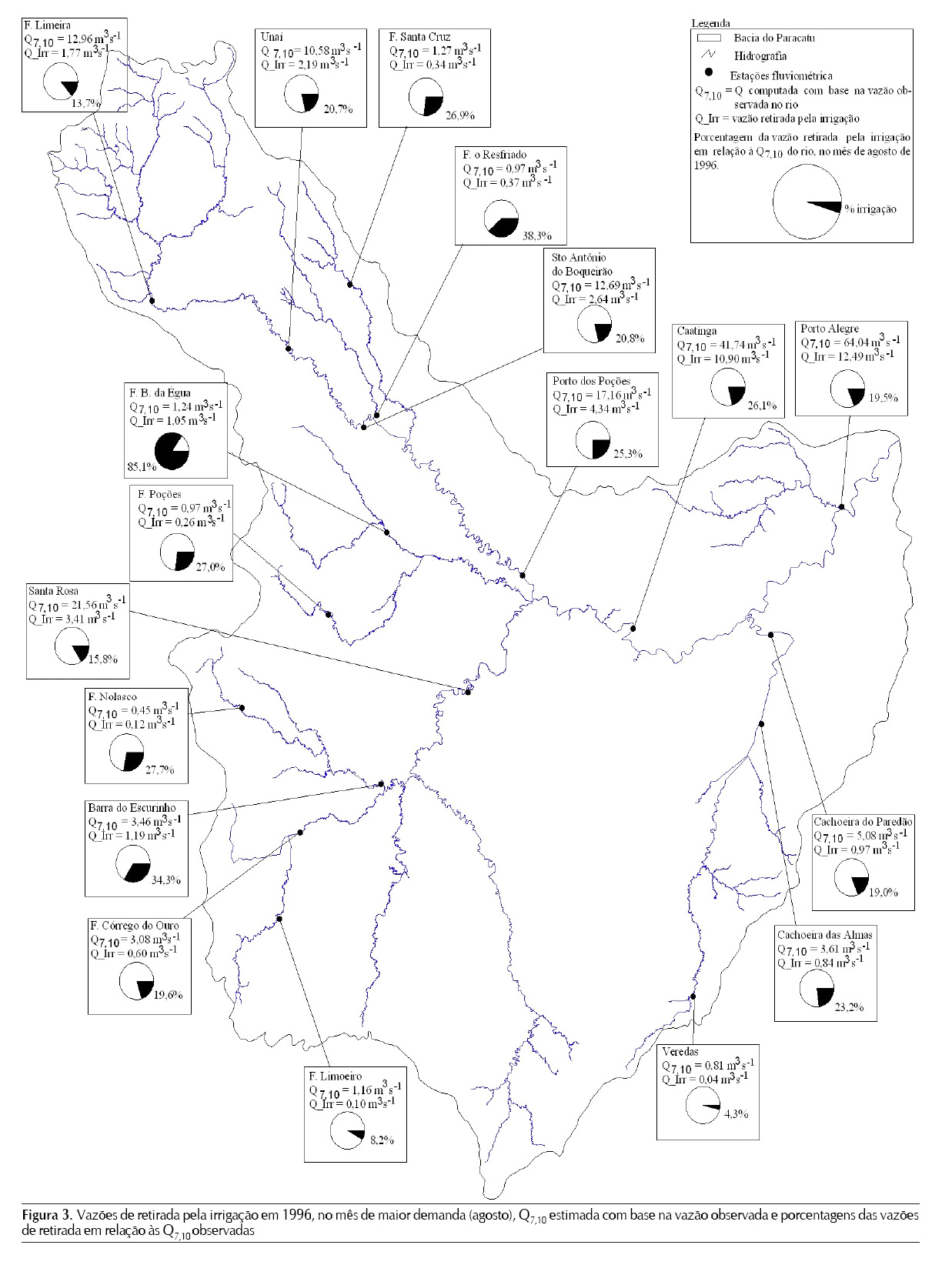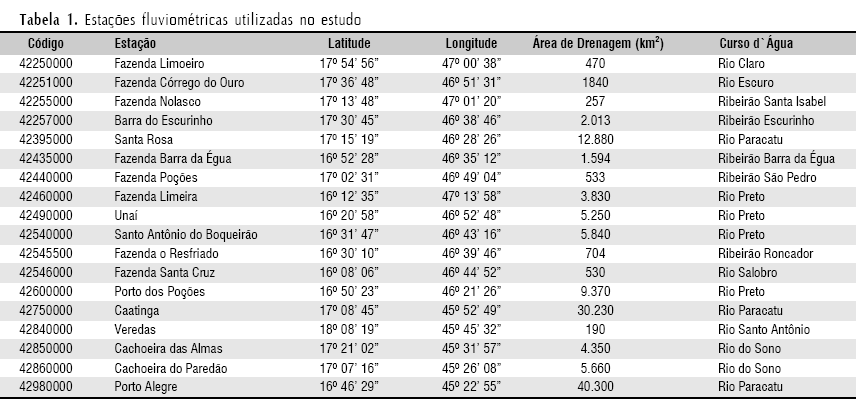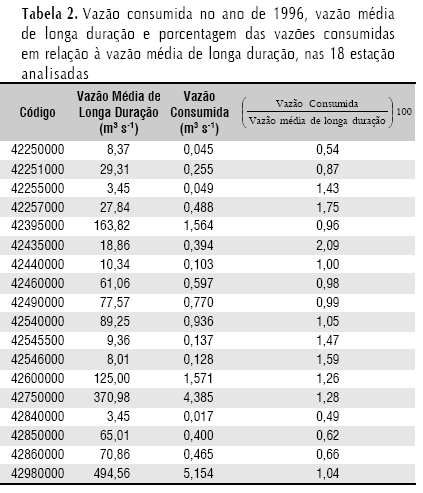The Paracatu River is the main tributary of the São Francisco River. As a consequence of the huge development of the irrigation in the Paracatu Basin, in the early 70-s, serious conflicts for the water use began to take place in several parts of the basin. The objectives of this paper were: to estimate the relative amount of the water consumption by irrigation and by animal and human supply in the Paracatu Basin; and to evaluate the impact of the water withdrawals for irrigation in the stream flow in the Paracatu River and tributaries. The average stream flow, the minimum stream flow of seven days and 10 years of return period (Q7,10) and the stream flow associated with the duration of 95% of permanence (Q95) were calculated from 1970 to 1996 for 18 stations used to measure the stream flow in the Paracatu Basin, and the water demand for the four sectors analyzed was calculated for 1996. Although the water withdrawals for irrigation in the month with the maximum demand have represented, for the 18 sections analyzed, from 4.3 to 85.1% of the Q7,10, the water effectively consumed by irrigation did not have significant influence on the mean stream flow.
water resources management; water use; water availability







